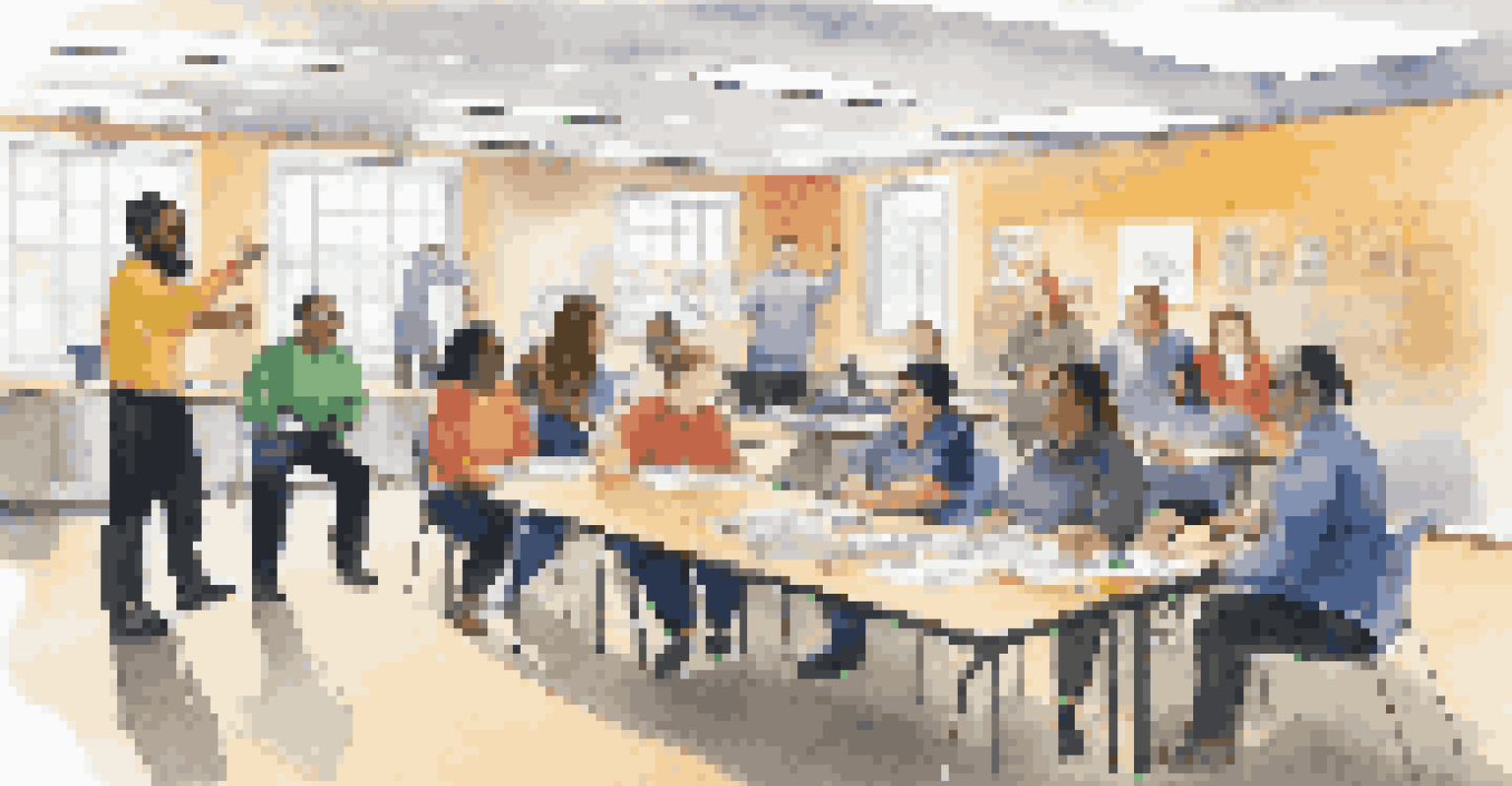Preparing for Open House Visitors with Special Needs

Understanding the Needs of Special Visitors
When preparing for open house visitors with special needs, it's essential to understand the variety of challenges they may face. Special needs can include physical disabilities, sensory sensitivities, or cognitive differences, each requiring unique considerations. By acknowledging these needs, you can make your space more welcoming and accessible for everyone.
Inclusion is not a matter of political correctness. It is the key to growth.
For example, someone using a wheelchair may require wider doorways and ramps, while a visitor with autism might benefit from a quieter environment. Taking the time to learn about these diverse needs can go a long way in creating a positive experience. Remember, the goal is to ensure that all visitors feel comfortable and valued.
Ultimately, understanding these needs helps foster a sense of belonging. It's not just about accessibility; it's also about empathy and creating an atmosphere where everyone can enjoy their visit.
Creating an Accessible Physical Space
The physical layout of your open house plays a crucial role in accommodating visitors with special needs. Begin by evaluating your space for accessibility features like ramps, handrails, and clear pathways. Ensuring that your environment is navigable means that everyone can explore freely without feeling restricted.

Consideration should also be given to signage, which should be clear and easy to read. Use large fonts and symbols to guide visitors effectively. Remember, the easier it is for someone to find their way around, the more comfortable they will feel during their visit.
Understanding Visitor Needs
Recognizing the unique challenges faced by visitors with special needs is crucial for creating an inclusive environment.
Lastly, think about seating arrangements. Providing various seating options, including accessible seating, ensures that everyone has a place to rest and engage. A well-planned space not only enhances comfort but also encourages social interaction among all guests.
Sensory-Friendly Environments for Visitors
Creating a sensory-friendly environment is key for many visitors, especially those who may feel overwhelmed in a bustling setting. To achieve this, consider incorporating quiet areas where guests can retreat if they need a break from the noise and activity. Soft lighting and calming colors can also contribute to a more soothing atmosphere.
The greatness of a community is most accurately measured by the compassionate actions of its members.
Additionally, be mindful of sensory triggers such as strong smells or loud sounds. Avoid using potent air fresheners or playing loud music, as these can cause discomfort for some visitors. Instead, opt for gentle background music or nature sounds that create a pleasant ambiance without overwhelming the senses.
By prioritizing a sensory-friendly environment, you demonstrate a commitment to inclusivity. This helps ensure that everyone can engage with your event comfortably and enjoyably, making it a memorable experience.
Training Staff for Inclusivity and Awareness
One of the most effective ways to prepare for open house visitors with special needs is by training your staff. Equip them with knowledge about different types of special needs, as well as strategies for assisting visitors. This training can transform your team into compassionate advocates who enhance the visitor experience.
Role-playing scenarios can be beneficial for staff training. By simulating various situations, staff can practice responding to different needs and become more comfortable interacting with diverse visitors. This hands-on approach can build empathy and understanding, fostering an inclusive environment.
Creating Accessible Spaces
A well-planned physical layout with clear signage and varied seating options enhances accessibility for all visitors.
Ultimately, well-trained staff can serve as guides and support for visitors with special needs. Their ability to recognize and address individual requirements can significantly enhance the overall experience, making visitors feel welcome and valued.
Effective Communication with All Visitors
Clear and effective communication is vital when welcoming visitors with special needs. It's important to be approachable and open to questions, allowing guests to express their needs without hesitation. A friendly demeanor can put visitors at ease, fostering an environment of trust and understanding.
Utilize various communication methods to accommodate different preferences. Some visitors may prefer verbal instructions, while others might benefit from visual aids or written materials. Providing information in multiple formats ensures that everyone can access the details they need to navigate your open house smoothly.
Lastly, don’t hesitate to ask visitors how you can assist them. This simple gesture shows that you value their input and are committed to making their experience enjoyable. Open dialogue is key to creating an inclusive atmosphere where everyone feels heard.
Providing Resources for Special Needs Visitors
Offering resources specifically designed for visitors with special needs can greatly enhance their experience. Consider creating information packets that include details about accessibility features, quiet areas, and sensory-friendly options available during the open house. Having this information readily available empowers visitors to navigate the event according to their preferences.
In addition, providing contact information for support staff can be helpful. This way, visitors know exactly who to reach out to if they have questions or require assistance during their visit. It also reassures them that help is available should they need it.
Training Staff for Inclusivity
Educating staff about special needs ensures they can effectively support and advocate for diverse visitors during events.
By proactively providing resources, you demonstrate a commitment to inclusivity and support. Visitors will appreciate your efforts and feel more comfortable attending your event, knowing that their needs are prioritized.
Gathering Feedback for Continuous Improvement
After your open house, gathering feedback from visitors with special needs is essential for continuous improvement. Create a simple feedback form that allows guests to share their experiences, highlighting what worked well and what could be enhanced. This valuable insight can help you refine future events to better serve all visitors.
Encourage open-ended questions that allow respondents to express themselves freely. For example, ask how they felt about the accessibility features or if they encountered any challenges during their visit. This approach not only provides you with detailed information but also shows visitors that their opinions matter.

Ultimately, feedback is a powerful tool in creating a more inclusive environment. By actively seeking input, you can ensure that your efforts are effective and that all visitors feel welcomed and supported during their next visit.
Celebrating Diversity and Inclusion in Open Houses
Celebrating diversity and inclusion should be at the heart of every open house event. By acknowledging the unique contributions of visitors with special needs, you create a richer and more vibrant atmosphere. This celebration can take many forms, from highlighting diverse stories to showcasing inclusive art or performances.
Consider incorporating moments during your open house that honor diversity. This could include sharing testimonials from visitors with special needs or hosting activities that promote collaboration among guests. These efforts reinforce the idea that everyone has something valuable to offer.
In essence, celebrating diversity fosters a sense of community and belonging. When visitors feel appreciated for who they are, it enhances their experience and builds lasting connections among all attendees.